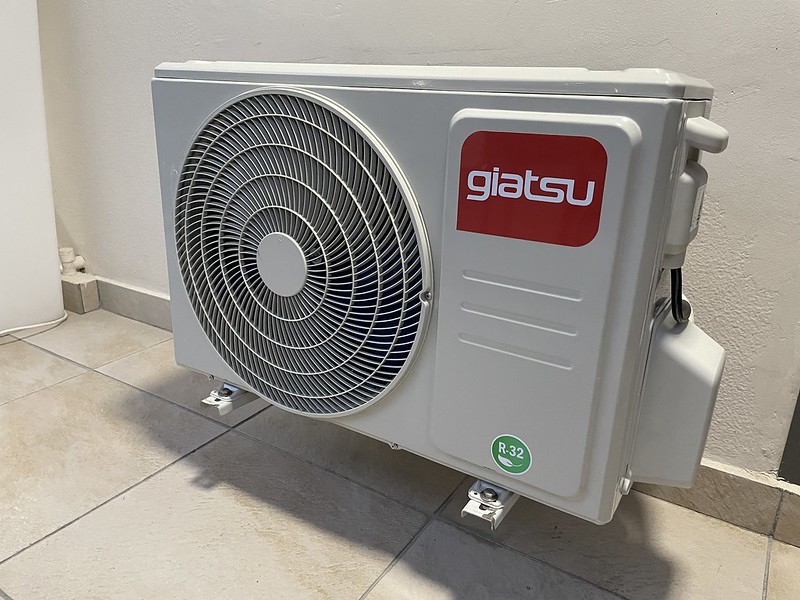A high static mini split is a type of ductless heating and cooling system designed for use in situations where the ductwork may have a higher resistance to airflow, often due to longer runs or more complex configurations. These systems are characterized by their ability to maintain adequate airflow and pressure even in the face of this increased resistance.
Key Features of High Static Mini Splits
High Static Pressure Capability
One of the defining features of high static mini splits is their high static pressure capability. This refers to the system’s ability to maintain airflow against a higher-than-normal amount of resistance in the ductwork. The static pressure is measured in inches of water column (i.w.c.), and high static mini splits typically have a static pressure rating of 0.36 i.w.c. or higher.
To achieve this high static pressure capability, high static mini splits often utilize larger, more powerful fans and blowers. These components are designed to generate the necessary pressure to overcome the increased resistance in the ductwork. The fan speed and airflow can also be adjusted to match the specific needs of the installation, ensuring optimal performance.
Multi-Speed Fan
Another important feature of high static mini splits is their multi-speed fan. This allows the system to adjust its airflow rate to match the needs of the ductwork and the conditioned space. By varying the fan speed, the system can maintain the required airflow even in situations where the ductwork may be longer or more complex.
The multi-speed fan is typically controlled by the system’s microprocessor, which monitors the static pressure and adjusts the fan speed accordingly. This helps to ensure that the system is operating efficiently and effectively, even in challenging ductwork configurations.
Return Air Options
High static mini splits may also include features such as return air from the rear or bottom of the indoor unit. This can help to improve airflow and reduce noise levels by optimizing the air circulation within the ductwork.
The rear or bottom return air configuration can be particularly useful in situations where the ductwork is longer or more complex, as it can help to minimize pressure drops and ensure that the conditioned air is distributed evenly throughout the space.
Condensate Drain Pump
Some high static mini split models may also include an internal condensate drain pump. This feature can help to prevent water damage in the event of a condensate drain clog or failure.
The condensate drain pump works by automatically removing the condensate that accumulates during the cooling process. This helps to ensure that the system operates efficiently and effectively, even in situations where the condensate drain may be located at a higher elevation or in a more challenging location.
Designing and Installing High Static Mini Splits
When designing and installing a high static mini split system, it is essential to pay close attention to the ductwork and ensure that it is sized and configured correctly to minimize resistance and maximize airflow.
Ductwork Considerations
One of the key factors to consider is the size and configuration of the ductwork. Using larger ducts and fittings with lower pressure drops can help to reduce the overall resistance in the system. Additionally, focusing on transitions and other key areas of the duct system can help to optimize airflow and minimize pressure losses.
It is also important to ensure that the ductwork is properly sealed and insulated to prevent air leaks and heat transfer, which can further impact the system’s performance.
System Sizing and Selection
Proper sizing and selection of the high static mini split system is also crucial. The system’s capacity and airflow requirements must be carefully matched to the specific needs of the space being conditioned. This may involve considering factors such as the size of the space, the number of zones, and the overall ductwork configuration.
By selecting the right high static mini split system and ensuring that the ductwork is properly designed and installed, you can help to ensure that the system operates efficiently and effectively, even in challenging ductwork configurations.
Technical Specifications: Gree High Static Slim Duct
As an example, the Gree High Static Slim Duct indoor unit offers a flexible and discreet solution for high static mini split installations. Some of the key technical specifications include:
- Static Pressure Rating: Up to 0.8 i.w.c.
- Airflow Range: 265-530 CFM
- Dimensions (W x D x H): 47.2 x 9.8 x 9.8 inches
- Designed for concealed installation above suspended ceilings or in open closet spaces
- Compact and discreet design for a seamless integration into the space
These technical specifications demonstrate the high static pressure capability and airflow flexibility of the Gree High Static Slim Duct indoor unit, making it well-suited for installations with challenging ductwork configurations.
Conclusion
High static mini splits are a specialized type of ductless heating and cooling system designed to overcome the challenges of high-resistance ductwork. By incorporating features such as high static pressure capability, multi-speed fans, and return air options, these systems can maintain adequate airflow and pressure even in complex ductwork configurations.
When designing and installing a high static mini split system, it is crucial to pay close attention to the ductwork, ensuring that it is sized and configured correctly to minimize resistance and maximize airflow. By selecting the right system and optimizing the ductwork, you can help to ensure that the high static mini split operates efficiently and effectively, providing reliable comfort in even the most challenging HVAC installations.
References:
- High Static Innovative Ducted Mini Split Solution – GREE Comfort. (n.d.). Retrieved from https://www.greecomfort.com/assets/our-products/u-match-plus/documents/u-match-plus-submittal-24mbh-b.pdf
- Busting a Myth About Low-Static Ducted Mini-Splits – Energy Vanguard. (2019, December 9). Retrieved from https://www.energyvanguard.com/blog/busting-myth-about-low-static-ducted-minisplits/
- 12000 BTU Concealed Duct Gree Mini-Split High Static Multi Zone Air … (n.d.). Retrieved from https://hvacdirect.com/12-000-btu-concealed-duct-gree-mini-split-high-static-multi-zone-air-handler.html
- Help me understand static pressure in ducted minisplit systems. (2016, August 16). Retrieved from https://www.greenbuildingadvisor.com/question/help-me-understand-static-pressure-in-ducted-minisplit-systems
- Indoor Units – High Static Slim Ducts – Gree Canada. (n.d.). Retrieved from https://www.gree.ca/products/indoor-units-high-static-slim-ducts

